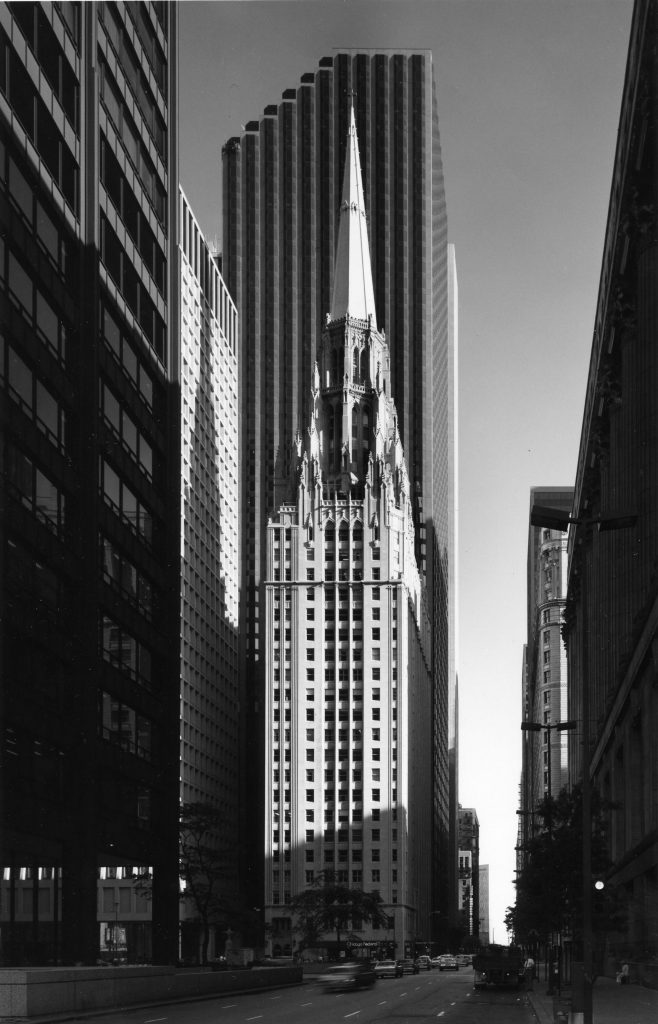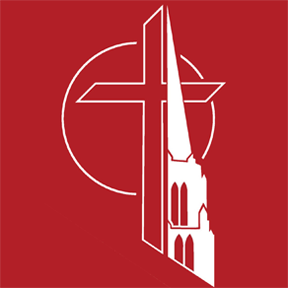 HISTORY
HISTORY
First United Methodist Church at the Chicago Temple is a congregation with a glorious past, a vibrant present and a promising future.
It is the oldest church in Chicago! It was founded by Methodist circuit riders in 1831, six years before the City of Chicago was incorporated.
For more than 175-years, the congregation has gathered for worship in five buildings. Its first services were held in the homes of its members. But in 1834 the growing congregation built a log cabin north of the Chicago River.
Four years later, Chicago’s first Methodists floated the cabin across the river and rolled it on logs to its present site at the corner of Washington and Clark Streets. From there it has never moved. A conventional brick church with a 148-foot spire replaced the log cabin in 1845. That building served the church until 1858 when the congregation’s leaders, acting on a bold new idea, dedicated a four-story, multi-use structure with stores and other businesses on the first two floors and church space for worship and classes on the top two floors.
The Great Chicago Fire of 1871 reduced the 1858 building to ashes. Refusing to yield to the “carrion comforts of despair,” the trustees, just days after the fire, voted to stay put and rebuild at “The Methodist Corner.” In short order, they dedicated another multi-use building that served the congregation until 1924 when the present skyscraper was dedicated. It was then the tallest building in Chicago. In 1922, at the last service in the old building that was about to be razed, the Rev. John Thompson declared in his sermon: “Changing conditions require new adaptations in methods, and a larger, more varied ministry. So a new building is to be erected on this corner. This great new church building will be known henceforth as The First Methodist Episcopal Church-‘City Temple.'” During the two years of construction, the name “City Temple” was changed to “The Chicago Temple.”
Since 1831, the church has played a vital role in the lives of its members and in the city of Chicago. It is truly an urban church. Its diverse membership wondrously reflects the cosmopolitan mix of the Chicago metropolitan area.
 ARCHITECTURE
ARCHITECTURE
After World War I, there were those who believed that First Methodist Church of Chicago should sell its valuable downtown real estate and move to the growing suburbs.
Instead, the leaders of the church followed the dictum of the great Chicago architect Daniel Burnham who famously said: “Make no little plans. They have no magic to stir men’s blood and probably themselves will not be realized. Make big plans; aim high in hope and work… Let your watchword be order and your beacon beauty. Think big.”
In this spirit, the congregation’s leaders decided the church would stay at “the Methodist Corner.” And they would not only build a new church, but a big one and a tall one. They engaged the renowned architectural firm of Holabird & Roche and gave them instructions to design a building that would be “Gothic in structure, with a churchly tower, a radiant cross at its pinnacle.” It would be a building that could rightly be thought of as a city temple.
Now the congregation stills gathers for worship in the first-floor sanctuary that seats about 500 people. The focal point is the altar with its wood carving that depicts Jesus weeping over the city of Jerusalem. Above the altar is a stained glass window that tells the story of the life, death and resurrection of Jesus Christ. The windows along the east and west walls portray events described in the Old and New Testaments. On the west wall there is one window that depicts downtown Chicago and the Chicago Temple. Next to it is a window that honors institutions in the Chicago area that the congregation helped found, including Garrett-Evangelical Theological Seminary, Northwestern University, Wesley Hospital and the Methodist Home for Children.
Located on the second floor are the Dixon Chapel, James Parlor, the Heritage Room and church offices. The third and fourth floors house the classrooms and nursery, a conference room and a choir room.
Each year thousands of people make the pilgrimage by two elevators and a set of stairs to the Sky Chapel located under the spire 400 feet above the streets of the city. Dedicated on Easter morning 1952, the chapel was a gift from the Walgreen family in memory of Mr. Charles R. Walgreen. The chapel’s altar is a companion piece to the altar in the sanctuary but in the carving on this altar Jesus is shown weeping over the city of Chicago because people still do not know “the things that make for peace.”
Floors five through 21 are rented as offices, mainly to lawyers who prize the proximity to the city, county and state buildings.


















